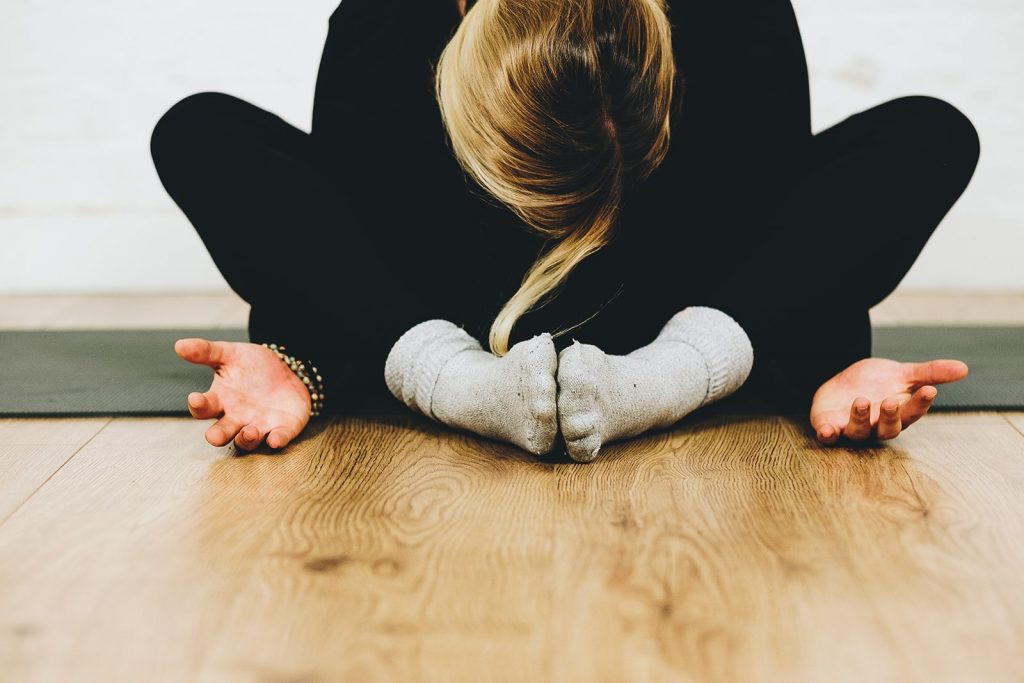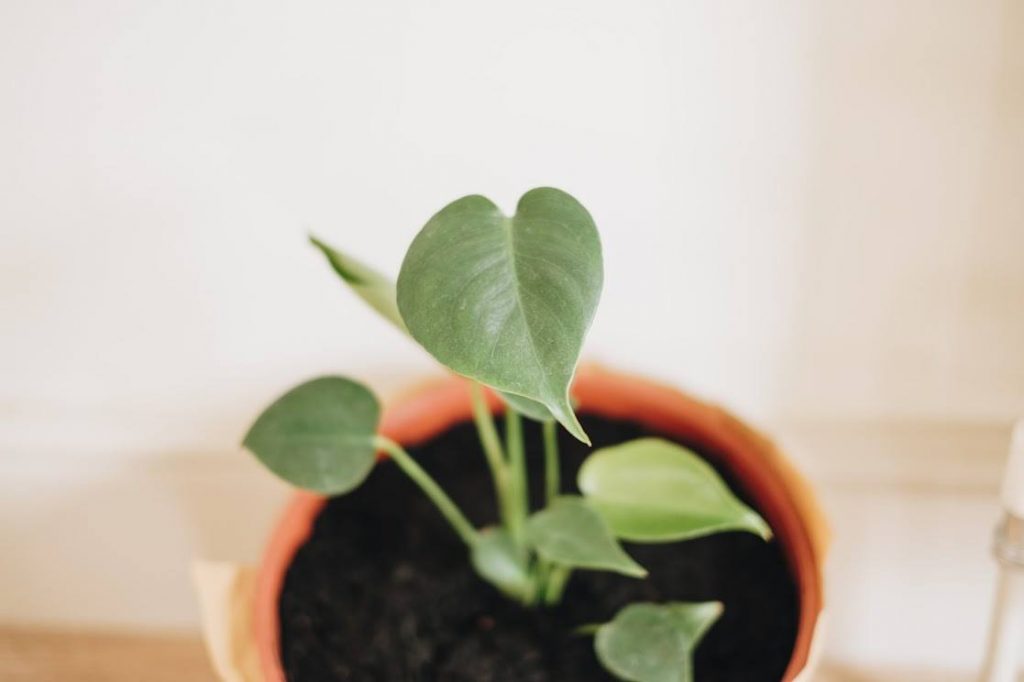The relationship between yoga and healing is not a straightforward one. The healing potential of yoga can creep upon us unexpectedly, or we may seek yoga out for healing something specific. We may have healed in ways we weren’t anticipating, or perhaps we know what it is like to have been damaged and undone by our yoga practices. This process of healing may be oriented in the body, be that rehabbing an injury or our relationship to the body; it may be rooted in supporting our mental health and cultivating self-compassion; or perhaps it is tied to social justice work and working towards planetary health. Often it is a combination of all these facets, as we become aware of the interwoven connections between all aspects of our personal and broader ecosystems, so that when we nourish or damage one area, it has a ripple effect across the whole.
My thoughts on yoga and healing have been germinating for a while, as I have been weaving together the strands of my own relationship to healing through practice, that of my peers’, and my students’. As a yoga facilitator, but particularly as one specialising in Teacher Trainings, conversations around yoga and healing arise time and time again. Often people are drawn to become yoga teachers (and seek out a training with an ethos such as Nourish’s) precisely because they have encountered some sort of healing through their yoga journey.
However, as I said, the relationship between yoga and healing is not a straightforward one, not just in how we experience (or don’t experience) healing, but how we think and talk about it too. It is one aspect of the yoga space, particularly right now, that needs critical evaluation and nuanced conversation.
Yoga as Healing OR Healing through Yoga?
What is helpful and what is toxic about framing yoga as a healing practice can be summed up in this question: are you using yoga to heal yourself, or, are you healing through yoga?
Untangling the difference between these two ideas is a little more complicated. Before you read on, you may even wish to contemplate that question and see what comes to mind.
The Limitations of Yoga as Healing
When we turn to yoga as something which heals us, we are taking an outside-in approach. We have identified something within ourselves or our lives we believe needs healing, and we are applying yoga as the remedy.
Although this may seem logical, and although this approach may work in some instances, it comes with expectations, pressures, and ideas around what needs to be healed (and therefore, something is ‘broken’ or ‘wrong with us’). The reality is healing is not uniform, linear, or with fixed terms.
Unfortunately, yoga is increasingly sold to us as healing. This may be just allusory, embedded into the commonly touted phrases that yoga is good for ‘stress’ ‘improving posture/mobility/balance’ ‘building strength’ ‘rehabbing back injuries’. This may well be true in some instances, but unless it is being marketed as an injury correcting/stress alleviating class, then those are byproducts, they are not the goal of yoga. Increasingly I see yoga advertised and bought into as a panacea, which is not only detrimental to individuals but undermines yoga’s origins and traditions.
Sometimes we are sold yoga as healing in a more literal sense, be that a workshop, retreat, teacher training, or products that promise healing (sometimes phrased as ‘transformation’). There is also often a timeframe on it (‘a six week course’, ‘a daily practice’), and the explicit or implicit idea, that if we deviate from the path — have a week off, don’t meditate one day, sleep in instead of doing our sun salutations — we have failed on our healing journey. Even if we cognitively understand this isn’t the case, when we buy into such narratives, we are often left with a lingering feeling that if we don’t follow the guidelines to the T, we have somehow failed — or yoga has failed us. In short, you are working for yoga, as opposed to allowing yoga to work with (not for) you.
Worse still, something predicated on being healing is often intrusive. I frequently see courses and classes that encourage students to take a deep dive into uncomfortable feelings and experiences, often rooted in trauma, without adequate support or with a teacher who is not professionally equipped to handle the myriad of responses and feelings it can provoke. It doesn’t even need to be directly outlined or marketed as a healing practice to have unwelcome, and sometimes devastating, consequences. One poignant example is that up until ten years ago (and still sometimes today), mindfulness and meditation practices were encouraged for everybody, as being anything from benign to transformative. However, as psychology and human behaviour expert Dr Willoughby Britton has spent her career demonstrating and treating, meditation can trigger serious psychological damage.
Yoga as healing is also prefaced on the idea that there is something we need to ‘change’, or worse still, ‘correct’. We may all have things we hope to change in our lives, but we could also all benefit from taking a softer approach to the process of change, one without pressures and expectations. Unfortunately, when it comes to ‘correcting’ things, the question is always to whose standards? Historically, it is those who have deviated from a prescriptive norm or find themselves at the margins who have been subject to correction, which ultimately leads, perhaps generations down the line, to trauma.
Just as healing and health are sold to us, this concept of correcting aligns with the blueprints of a heteronormative, patriarchal, capitalist society. We all do live and must accord at times to the capitalist structures of our societies — yet not when it comes to healing. When we must buy into, are sold, or take an outside-in approach, it compromises, and possibly deprives us completely, of our personal agency.

The Process of Yoga as Healing
Healing through yoga, however, is an embodied, inside out, and ongoing process we participate in. It elevates yoga from something we do to something we live, and gives us the insight to recognise that healing takes many forms — sometimes we change our actions. Sometimes we change our perspective on a matter. Sometimes we actively choose to change nothing. Recognising that healing is a process also frees it from time constraints and linear conceptions of progress. It also prevents us from sectioning up our actions or practices into ‘fitness’, ‘healing’, or ‘mental clarity and focus’.
Healing through yoga is non-linear, in the sense that it doesn’t have road maps or goals, and allows for the flexibility of progression, stagnation, and setbacks as inevitable and important processes for growth. It is often also peripheral, whereby we don’t need to thrust goals (and healing is a common goal in yoga) into our practice. Instead, we can choose softer intentions and relax the pressures on our practice and move, breath, meditate, journal, reflect, or not practice at all, in a way that feels organically right or necessary that day. Making these choices based on the reality of our experience is something I have found to be incredibly, unexpectedly, healing across my life. That is healing as a peripheral process. It also allows me to start a practice feeling bad and end feeling the same, or worse, or not enjoy it, and to be okay with that, recognising that is a normal phenomenon, and not something that needs to be analysed or agonised over.
Finding Personal Freedom, Choice, and Ways of Being through Practice
A non-prescriptive, you-centred, practice is something I advocate for all my students. Defining the terms of your own practice is crucial because it helps make it non-invasive and non-abandoning (borrowing language I first came across in Sarah Powers’ writing).
By non-invasive I mean, not feeling beholden or literally invaded by the ideas (and ideals) of a teacher, a methodology, a society, or a historical framework. It also includes not feeling obliged to open ourselves up, physically or emotionally, to intrusive practices and ideas that may be triggering. In short, we get to set the boundaries. There are important conversations to be had about this regarding trauma, particularly navigating trauma in the yoga space. I have observed, in myself and others, time and time again, how many practices intended to help heal trauma can end up being re-traumatising. The reality is that trauma is complex and unique, trauma awareness in the yoga space is integral, but much of it is predicated on giving your students the personal power and tools to define their practice for themselves. As teachers, the easiest way to do this is to be invitational in your language and encourage your students to embrace their own agency by taking what works for them and discarding what doesn’t in a class.
One example of this is regards an embodied approach to asana and practice. Although it is something integral to my teaching philosophy, I also recognise the limitations of this approach. An embodied approach rests on responding to the cues of the body, yet listening, responding and being in the body may not always be appropriate. Choosing to practice yoga just by moving, distractedly, through the motions or doing something completely different will ultimately, I believe, be more healing in the long term and less damaging in the short term. A statement that is in direct opposition to the idea that we must constantly ‘show up’ to our practice in order to benefit from it. Choosing to say no often ends up being far more liberating.
This leads to non-abandoning, which encompasses both not abandoning our practice and not being abandoned by it. It entails working with yoga, in whatever way you find yoga to be that particular day, defined through your own experience and wisdom. Because working with yoga may mean not practising for a while, putting yoga down for a day or a month is not abandoning it. It is recognising your agency in the practice, which hopefully comes with the knowledge that you can return to the more expressive aspects of yoga, such as asana, pranayama, chanting, or community work, when you are ready.
The wellness industry is saturated with buzzwords, and as much as I may try to resist it, Nourish is a part of the wellness industry, and I do use and believe in many of these buzzword concepts. This is why when I use a term like healing (or embodied, or diversity and inclusivity), I like to take the time to explain what that term means to Nourish and how we actively, in our trainings and workshops, include it. As yoga continues to evolve and become increasingly popular I believe it is increasingly important to hold spaces to have these critical conversations where we can challenge as well as develop central tenets of modern yoga.
Yoga undeniably can support personal and community healing, but recognising that we heal through and in relationship to yoga, as opposed to yoga healing us, is important for preventing damage to ourselves or the practice in the future.

1 thought on “Yoga and Healing”
Pingback: Trauma and Yoga Series Part 1: Why Agency is Everything in Trauma-Informed Spaces – Nourish Yoga Training